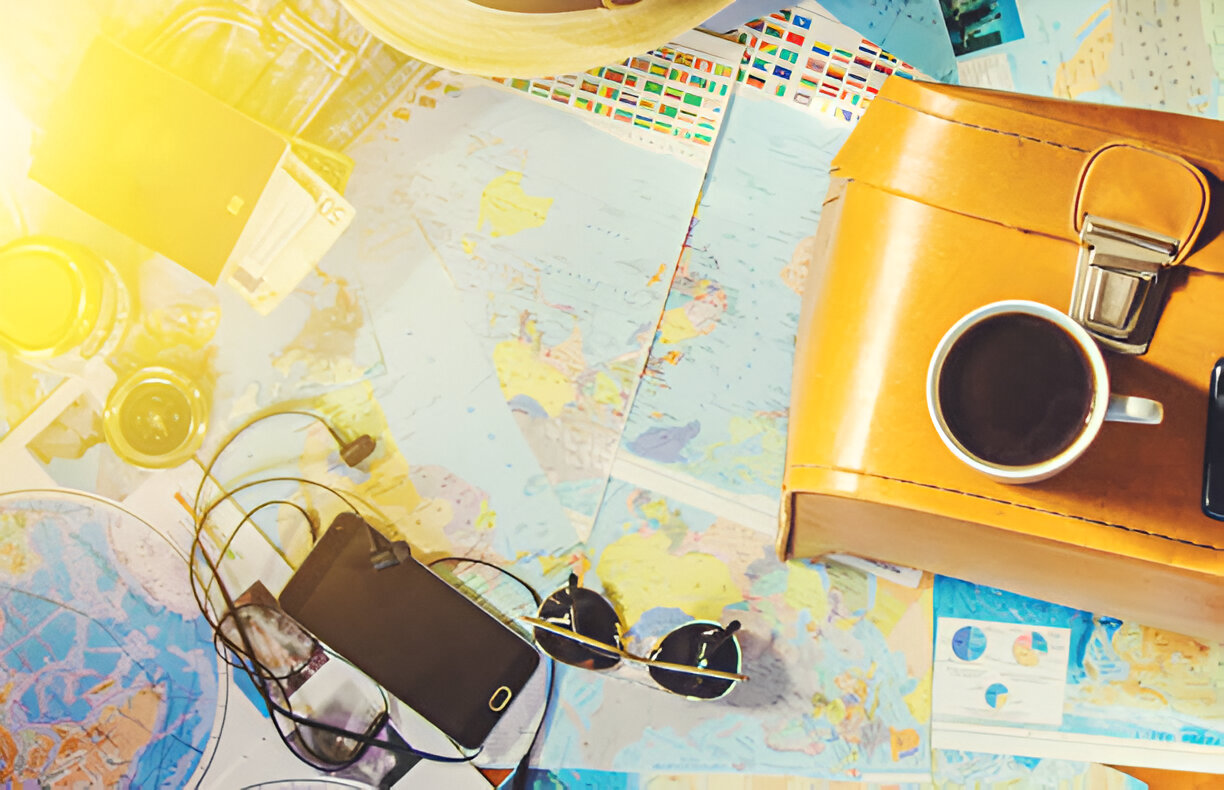-
Table of Contents
“Experience the World: Discover Top Cultural Festivals That Inspire Your Next Adventure!”
Diwali: The Festival of Lights in India
Diwali, often referred to as the Festival of Lights, is one of the most significant and widely celebrated festivals in India, embodying a rich tapestry of cultural, spiritual, and social traditions. This vibrant festival typically occurs in October or November, marking the triumph of light over darkness and good over evil. The origins of Diwali can be traced back to various ancient Indian texts, with its significance varying across different regions and communities. However, the central theme remains consistent: the celebration of hope, renewal, and the victory of righteousness.
As the festival approaches, cities and villages across India transform into a kaleidoscope of colors, with homes adorned with intricate rangoli designs made from colored powders, flower petals, and even rice. These artistic displays not only enhance the aesthetic appeal of the surroundings but also symbolize the welcoming of prosperity and good fortune. In addition to the visual splendor, the air is filled with the enticing aromas of traditional sweets and savory snacks being prepared in households, as families come together to celebrate this joyous occasion.
The lighting of oil lamps, or diyas, is perhaps the most iconic aspect of Diwali. As night falls, millions of these small lamps illuminate homes, streets, and temples, creating a breathtaking spectacle that signifies the dispelling of darkness and ignorance. Fireworks also play a crucial role in the festivities, with vibrant displays lighting up the night sky, further enhancing the celebratory atmosphere. However, it is essential to approach this aspect of the festival with mindfulness, as concerns regarding air pollution and safety have prompted many communities to seek eco-friendly alternatives.
In addition to the visual and sensory delights, Diwali is a time for spiritual reflection and familial bonding. Many people engage in prayers and rituals, seeking blessings from deities such as Lakshmi, the goddess of wealth and prosperity, and Ganesha, the remover of obstacles. These rituals often involve the exchange of gifts and sweets among family members and friends, reinforcing social ties and fostering a sense of community. The festival also serves as an opportunity for charitable acts, with many individuals and organizations participating in initiatives to help those in need, thereby embodying the spirit of giving that is central to the celebration.
Traveling to India during Diwali offers a unique opportunity to immerse oneself in the local culture and experience the festival’s grandeur firsthand. Major cities like Delhi, Mumbai, and Jaipur host elaborate celebrations, featuring public events, cultural performances, and fairs that showcase traditional crafts and cuisine. Visitors can partake in the festivities by attending local celebrations, sampling regional delicacies, and even participating in rituals, which can provide a deeper understanding of the cultural significance of the festival.
Moreover, the sense of unity and joy that permeates the atmosphere during Diwali is palpable, making it an unforgettable experience for travelers. As communities come together to celebrate, the festival transcends religious boundaries, inviting people from all walks of life to join in the festivities. Thus, planning a trip to India around Diwali not only allows for an exploration of the country’s rich cultural heritage but also offers a chance to witness the profound impact of this festival on the lives of millions. In conclusion, Diwali stands as a testament to the enduring power of light, love, and community, making it a remarkable occasion to experience and cherish.
Carnival: A Vibrant Celebration in Brazil
Carnival in Brazil stands as one of the most vibrant and exhilarating cultural festivals in the world, attracting millions of visitors each year. This grand celebration, which typically occurs in February or March, just before Lent, is renowned for its lively parades, elaborate costumes, and infectious music. The roots of Carnival can be traced back to European traditions, particularly those of the Portuguese and Spanish, but over the centuries, it has evolved into a uniquely Brazilian spectacle that reflects the country’s diverse cultural heritage.
As the festival approaches, cities across Brazil begin to buzz with anticipation, but it is in Rio de Janeiro where Carnival reaches its zenith. The iconic Sambadrome, a purpose-built venue, becomes the epicenter of the festivities, showcasing samba schools that compete in a dazzling display of choreography, music, and artistry. Each samba school spends months preparing for this moment, crafting intricate floats and designing elaborate costumes that often incorporate feathers, sequins, and vibrant colors. The result is a breathtaking visual feast that captivates both locals and tourists alike.
In addition to the grand parades, street parties known as “blocos” take over the neighborhoods, inviting everyone to join in the revelry. These informal gatherings are characterized by live music, dancing, and a sense of community that transcends social barriers. Participants often don costumes or masks, further enhancing the festive atmosphere. The energy is palpable as people of all ages come together to celebrate life, love, and the spirit of Carnival. This communal experience is a testament to Brazil’s rich cultural tapestry, where African, Indigenous, and European influences converge to create a unique celebration.
Moreover, the music of Carnival is an essential element that drives the festivities. Samba, with its infectious rhythms and lively beats, serves as the heartbeat of the celebration. Musicians and dancers take to the streets, encouraging everyone to join in the dance. The sound of drums, brass instruments, and the joyous voices of revelers create an atmosphere that is both exhilarating and liberating. As the sun sets, the energy only intensifies, with parties continuing late into the night, showcasing the unyielding spirit of the Brazilian people.
While Rio de Janeiro is often the focal point of Carnival, other cities across Brazil also host their own unique celebrations. Salvador, for instance, is famous for its street parties and the use of “trios elétricos,” large trucks equipped with sound systems that transport musicians and dancers through the streets. This variation in celebration styles highlights the regional diversity within Brazil, allowing visitors to experience different facets of the Carnival spirit.
Planning a trip around Carnival offers travelers an unparalleled opportunity to immerse themselves in Brazilian culture. However, it is essential to book accommodations and travel arrangements well in advance, as the festival attracts a significant influx of tourists. Additionally, understanding the local customs and traditions can enhance the experience, allowing visitors to engage more meaningfully with the festivities.
In conclusion, Carnival in Brazil is not merely a festival; it is a vibrant expression of cultural identity and community spirit. The combination of stunning visuals, infectious music, and a sense of togetherness creates an unforgettable experience that resonates with all who participate. For those seeking to explore the world through its cultural celebrations, planning a trip around Carnival is an opportunity to witness the joy and passion that define Brazilian culture.
Oktoberfest: The World’s Largest Beer Festival in Germany
Oktoberfest, held annually in Munich, Germany, stands as the world’s largest beer festival, attracting millions of visitors from across the globe. This iconic event, which typically runs from late September to the first weekend in October, is not merely a celebration of beer; it is a vibrant showcase of Bavarian culture, tradition, and hospitality. Originating in 1810 as a royal wedding celebration for Crown Prince Ludwig and Princess Therese, Oktoberfest has evolved into a grand festival that spans 16 to 18 days, featuring a rich tapestry of activities, entertainment, and culinary delights.
As one approaches the festival grounds, the sight of massive beer tents, amusement rides, and traditional Bavarian decorations creates an atmosphere of excitement and anticipation. The festival is held at Theresienwiese, a sprawling area that transforms into a bustling hub of activity. Visitors can explore an array of attractions, from thrilling rides to artisan markets, but the heart of Oktoberfest lies within its famous beer tents. Each tent, operated by different breweries, offers a unique ambiance and a selection of locally brewed beers, primarily Märzen, a traditional German lager. The sheer scale of the event is staggering, with over six million liters of beer consumed during the festival, highlighting the deep-rooted significance of beer in Bavarian culture.
In addition to the beer, Oktoberfest is a culinary feast, featuring an extensive array of traditional German foods. Guests can indulge in pretzels, sausages, roast chicken, and various regional specialties, all of which complement the beer perfectly. The festival also emphasizes the importance of family and community, with numerous activities designed for all ages. From traditional folk music performances to parades showcasing Bavarian costumes, Oktoberfest fosters a sense of camaraderie among attendees, creating lasting memories and connections.
Moreover, the festival is not solely about consumption; it is a celebration of Bavarian heritage. Visitors can immerse themselves in the local culture by participating in traditional dances, enjoying live music, and even taking part in competitions such as stein-holding contests. The vibrant atmosphere is further enhanced by the colorful attire worn by many attendees, with men donning lederhosen and women wearing dirndls, which adds to the authenticity of the experience.
Planning a visit to Oktoberfest requires some foresight, as accommodations in Munich can fill up quickly due to the influx of tourists. It is advisable to book lodging well in advance and consider attending on weekdays to avoid the largest crowds. Additionally, understanding the festival’s schedule can enhance the experience, as certain days feature special events, including family days with discounted prices and themed celebrations.
In conclusion, Oktoberfest is more than just a beer festival; it is a cultural phenomenon that encapsulates the spirit of Bavaria. With its rich history, lively atmosphere, and emphasis on community, it offers a unique opportunity for travelers to engage with German traditions while enjoying world-class brews and delectable cuisine. For those seeking an unforgettable experience that combines revelry with cultural immersion, planning a trip around Oktoberfest is undoubtedly a worthwhile endeavor. As the festival continues to grow in popularity, it remains a testament to the enduring appeal of Bavarian culture and the universal joy of coming together to celebrate life’s simple pleasures.
Q&A
1. **What is the Carnival in Rio de Janeiro, Brazil?**
The Carnival in Rio de Janeiro is a world-famous festival held before Lent, featuring vibrant parades, samba music, and elaborate costumes, attracting millions of visitors each year.
2. **What is the Diwali Festival in India?**
Diwali, also known as the Festival of Lights, is celebrated by millions across India and the world, symbolizing the victory of light over darkness, with festivities including fireworks, lanterns, and family gatherings.
3. **What is the Oktoberfest in Munich, Germany?**
Oktoberfest is the world’s largest beer festival held annually in Munich, featuring traditional German beer, food, music, and cultural events, drawing millions of attendees from around the globe.
Conclusion
Top cultural festivals around the world offer unique opportunities to experience diverse traditions, art, and community spirit. From the vibrant colors of Holi in India to the electrifying atmosphere of Carnival in Brazil, these events showcase the rich heritage and creativity of different cultures. Planning travel around these festivals not only enhances the travel experience but also fosters a deeper understanding and appreciation of global diversity. Engaging with local customs and celebrations can create lasting memories and connections, making cultural festivals an essential consideration for any travel itinerary.




